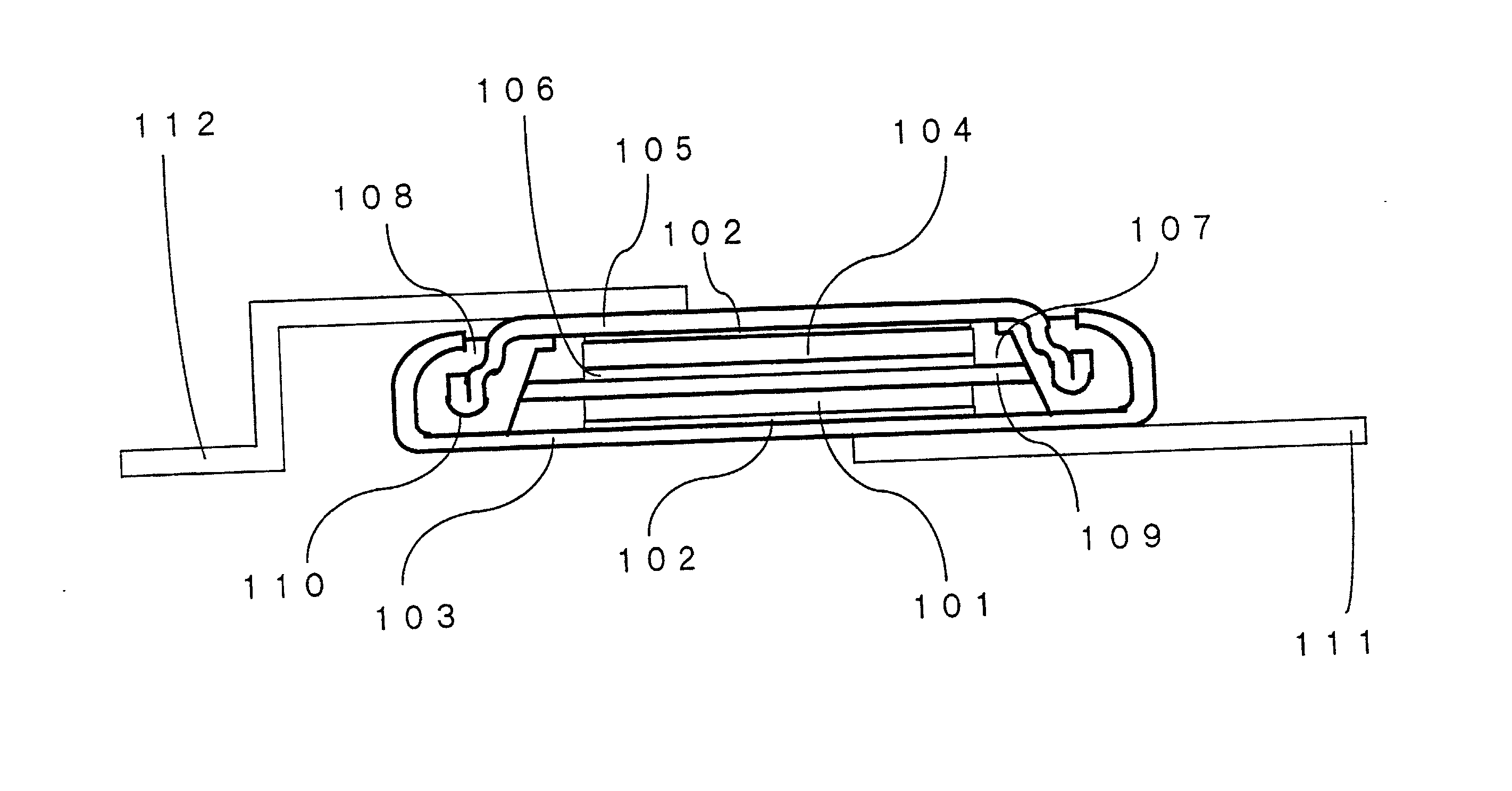Non-aqueous electrolyte secondary
a non-aqueous electrolyte, secondary battery technology, applied in the direction of cell components, sustainable manufacturing/processing, final product manufacturing, etc., can solve the problems of reflow soldering, rapid deterioration after reflow, and increasing difficulty in securing the space for a soldering bi
- Summary
- Abstract
- Description
- Claims
- Application Information
AI Technical Summary
Benefits of technology
Problems solved by technology
Method used
Image
Examples
example 1
[0076] Example 1 used MoO.sub.3 and WO.sub.2 as the positive electrode and negative electrode active materials, respectively. The positive electrode, negative electrode and electrolytic solution were prepared by the procedures described below. The battery was 4.8 mm in outer diameter and 1.4 mm thick. FIG. 1 presents its cross-sectional view.
[0077] In Example 1, the mixture for positive electrode material was prepared by incorporating commercial MoO.sub.3, after it was crushed, with graphite as the electroconductive agent and polyacrylic acid as the binder in a ratio of 53 / 45 / 2 by weight, and 5 mg of the mixture was pressed into a pellet, 2.4 mm in diameter, under pressure of 2 ton / cm.sup.2. The positive electrode unit of monolithic structure was prepared, wherein the pellet 101 thus prepared and electrode collector 102 were assembled in and bound to the positive electrode case 103. It was treated at 250.degree. C. under a vacuum for 8 hours for drying.
[0078] The mixture for negativ...
examples 2 to 17
[0083] Examples 2 to 17 used MoO.sub.3 and SiO as the positive electrode and negative electrode active materials, respectively. The positive electrode, negative electrode and electrolytic solution were prepared by the procedures described below. The battery was 4.8 mm in outer diameter and 1.4 mm thick. FIG. 1 presents its cross-sectional view.
[0084] In Examples 2 to 17, the mixture for positive electrode material was prepared by incorporating commercial MoO.sub.3, after it was crushed, with graphite as the electroconductive agent and polyacrylic acid as the binder in a ratio of 53 / 45 / 2 by weight, and 5 mg of the mixture was pressed into a pellet, 2.4 mm in diameter, under pressure of 2 ton / cm.sup.2. The positive electrode unit of monolithic structure was prepared, wherein the pellet 101 thus prepared and electrode collector 102 were assembled in and bound to the positive electrode case 103. It was treated at 250.degree. C. under a vacuum for 8 hours for drying.
[0085] The liquid sea...
PUM
| Property | Measurement | Unit |
|---|---|---|
| Fraction | aaaaa | aaaaa |
| Fraction | aaaaa | aaaaa |
| Fraction | aaaaa | aaaaa |
Abstract
Description
Claims
Application Information
 Login to View More
Login to View More - R&D
- Intellectual Property
- Life Sciences
- Materials
- Tech Scout
- Unparalleled Data Quality
- Higher Quality Content
- 60% Fewer Hallucinations
Browse by: Latest US Patents, China's latest patents, Technical Efficacy Thesaurus, Application Domain, Technology Topic, Popular Technical Reports.
© 2025 PatSnap. All rights reserved.Legal|Privacy policy|Modern Slavery Act Transparency Statement|Sitemap|About US| Contact US: help@patsnap.com



